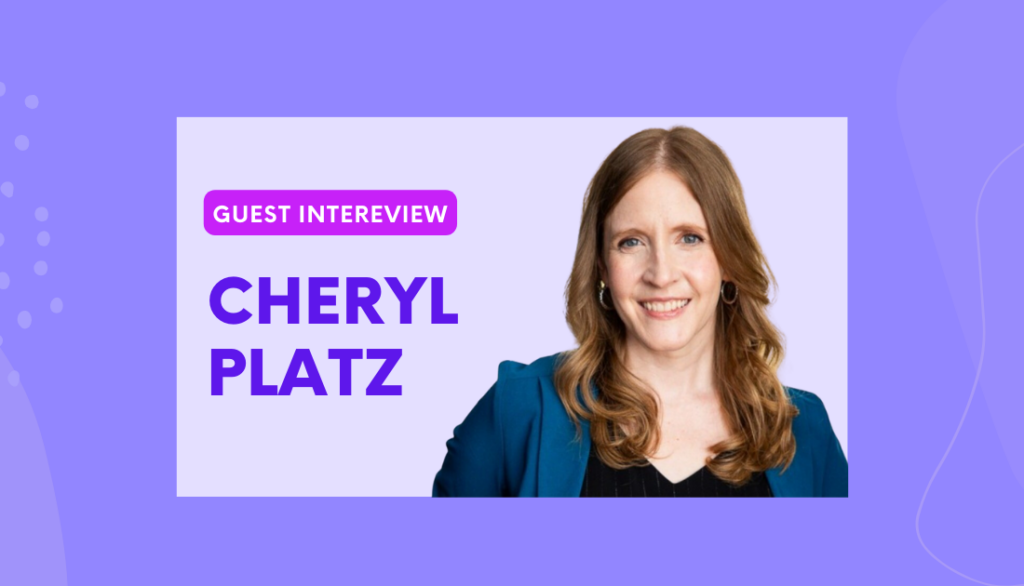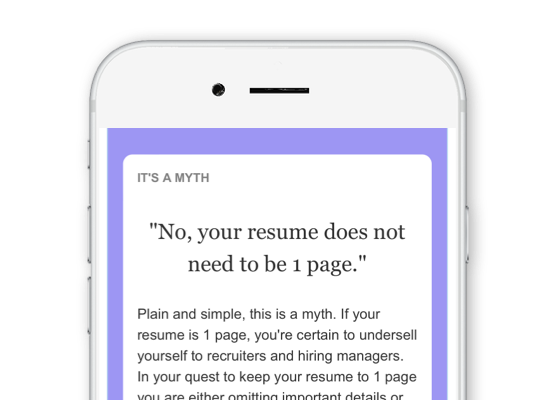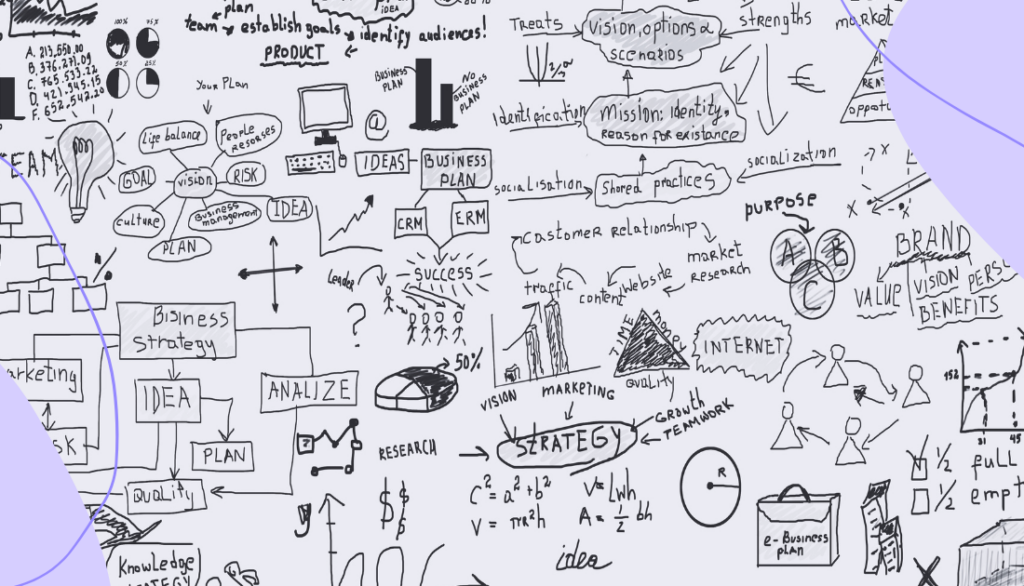Episode 67
How to develop a CEO mindset for your career to advance professionally
47 min listen
Episode 63
47 min listen

Listen to the Episode
Episode Summary
To advance professionally, you need to be the CEO of your career. Let’s face it, your boss or manager can give advice, but there’s a difference between advice and action. In this insightful episode, Erin Lindstrom, a seasoned CEO and coach, reveals the strategies for becoming the CEO of your career. Diving into the idea that waiting for motivation is a trap, she stresses the importance of creating routines and structures tailored to your personal life. Erin challenges listeners to rethink their approach by stepping into the CEO role of for the business of your career, or what we often to refer to at Career Strategy Lab as the product of you. Becoming the CEO of your career isn’t just about job performance; it’s about creating a career that truly fits the professional and personal life you aspire to have.
Listeners will learn to take command of their career journey by knowing their worth, making strategic decisions like a CEO, and managing their internal team of one with confidence. The discussion also tackles imposter syndrome by calling for a balance of humility and assurance. Erin demystifies the concept of motivation, showing how action breeds the drive to succeed, and underscores the power of self-recognition in your professional progress.
Whether you’re navigating uncertainty, wrestling with self-doubt, or simply looking to refine your career strategy, this episode offers practical tips and relatable advice to guide you forward. Tune in for a realistic roadmap to cultivating the mindset you need to design, market, and propel your career—and ultimately, yourself—towards your goals.
Create your dream career, and life
- Book a free Career Strategy Call to learn how we can help you
- Get our free Career Roadmap to help you navigate your career
- Check out Career Strategy Lab, our 3-month career coaching program
Discussion Questions About The Episode
- How can you establish a routine that contributes to your career development without waiting for external motivation, as Erin suggests? Reflect on a time you successfully implemented a routine and how it impacted your productivity.
- Erin emphasizes the importance of making decisions and committing to them. Discuss a time when you made a strategic decision that significantly influenced your career path. How did that decision align with your vision and goals?
- In what ways can you incorporate Erin's concept of interviewing a company as much as they are interviewing you in your next job search? How might this mindset shift affect the way you approach job interviews and evaluate potential employers?
- Reflect on how you currently manage your inner voice when it comes to personal and career development. How could you apply Erin's recommendations to cultivate a more supportive and confident internal dialogue that aligns with being the "CEO of the product of you"?
- How can you actively recognize and celebrate your achievements without falling into the traps of imposter syndrome or overconfidence?
Episode Notes & Links
Episode Transcript
Sarah Doody [00:00:00]: Hey there. I’m Sarah Doody, host of the career strategy podcast. Many professionals are seeking more impact, flexibility, growth, and let’s face it, getting paid what they’re worth. But how do you unlock this in your career? It starts with strategy. I’m taking you behind the scenes of what’s working for my career coaching clients. You’ll hear strategies and action career? Let’s get after it.
Erin Lindstrom [00:00:38]: We are gonna go ahead and dive in. So hello. You have probably noticed by now that I am not Sarah Doody. Hi. My name is Erin, and Becca is here with me too. We are 2 of the coaches inside of CSL, and that’s career strategy lab if you’re not familiar with it just yet. And we’ve been given the gift of being able to bring this training to you today. So we’ve been working with Sarah for a while now inside of CSL.
Erin Lindstrom [00:01:03]: And if you know anything about career strategy lab, of course, there is the strategy side. Right? There’s how to do the things, how to develop your resume, your LinkedIn, what we call your compass statement and your portfolio, how to make connections, how to do the job interviews, all of that jazz. And the other component is the mindset component. And so each week, we have q and a strategy calls where we do live critiques. We go over anyone’s strategic questions. And then on Wednesdays, we actually have a mindset call. And these are a really special, I think, container and place where, honestly, like, magic happens. There’s a lot that you can do for your career that is about doing the thing.
Erin Lindstrom [00:01:44]: Right? And there are step by step processes that you can take, which we teach all of those. But the other side of it is the you dealing with yourself side. And we refer to that as mindset work, and we’re gonna talk about that today. So the topic of our training today is CEO strategies to advance your career. And I will tell you more about myself in a second, but spoiler alert, I am a CEO. And a lot of the things that we teach inside of CSL are really taking on those CEO mindsets and strategies for yourself as you develop the product of you. So depending on how long you followed Sarah and how much of her work you read or you followed, the product of you is something she talks about all the time. Her book is coming out later this year titled the product of you.
Erin Lindstrom [00:02:28]: And it’s all about designing, marketing, and selling yourself as a candidate, right, so that you can get a job you want with a company culture that is right for you with the benefits and flexibility that work for your life. And hopefully a job that is fulfilling, where you’re doing what you’d like to do, where you’re working on a team, where you feel like your contributions are important. And doing that is all the same thing as on the entrepreneurship side. So as a CEO myself, I have a SaaS company. I also have a coaching and education company. And what I see all the time is that team dynamics very much have to do with people self managing. Right? And self doubt can pop UX. Like, whether you’re building a business or whether you’re building yourself as a candidate to get that next job, there are so many parallels of the imposter syndrome that can come up, which we’re gonna get into today, as well as the way that you can powerfully learn how to communicate about your past and your present to get what you want, whether that is closing a sale or closing a deal or landing that job offer.
Erin Lindstrom [00:03:32]: And so we’re gonna talk through some of those things today. So what you can expect during the next hour or so, our goal is really to help you think different about leading yourself through the process of career development. We’re gonna share how we help our clients step into the CEO role as they design, market, and sell the product to you, And we’re gonna share some potential next steps so that you can get the support that you need or want. And perhaps that’s nothing right now. Right? This might be enough for some of you. Some Some of you might be interested in joining CSL. It’ll be a bit different, but we wanna talk through these things so that you can apply it wherever you are in that job search and start thinking a bit differently about how you’re interacting, not just with your career materials, but with the world. So tiny bit about me so that you have an idea of who this person is talking to.
Erin Lindstrom [00:04:19]: So I’m Erin. Like I said, I am a CEO. I’m also a coach inside of CSL. I’m a SaaS founder. I’m 3 years in, and one day, we will open up sales completely. That’s actually how I met Sarah is in the software side of things. I am a sales expert. I have been training entrepreneurs for the last 10 years in how to sell better in written form, in person form, if you will, and also digitally.
Erin Lindstrom [00:04:42]: And I love CSL because we get to transfer a lot of this knowledge into helping people get the job that they want, whether that’s a promotion, whether that’s completely changing careers and industries, or whether that’s climbing the ladder. Right? I’m also a mom of 2, and fun fact, I am a comedian as well. So I improv is really what I do the most of, and so much of that comes through in what we talk about too, particularly with interviewing, with being present, with being in the moment and being able to figure things out. So some of that might come up. We’ll kind of see. Alright. So with that, we’re gonna dive in. Just so you know what I’m about, I love helping people design a business or a career that helps them live the life they want.
Erin Lindstrom [00:05:26]: And one of Sarah’s things, we talk about a dream life. Right? And I understand that it’s not everyone’s dream to work. Okay? And this is career strategy lab is a career incubator. Living under capitalism, like most of us, I anyway, I’ll speak for myself. Like, I need to have a job in order to pay the bills. So working is part of that for me. And the question I’ve asked myself is, okay. If working is part of this, what is the most fun I could have? What’s the most connected version of this? What’s the best case scenario where we are creating win wins? That’s the framework I’m coming with.
Erin Lindstrom [00:05:56]: So a couple notes about what we’re about to go over, and we say this on every mindset call too, by the way. Because when we are coaching and when you are giving out advice, everyone needs to be empowered to take what you want and leave the rest. This is not about taking every single thing that I say and making it your new mantra. Like, you don’t have to. In fact, I think discerning is one of the most important things you can Doody, and I would love for you to have both an open mind and to know that it’s okay if not everything hits for you. And some things, they might be like, oh, that’s interesting, but I don’t quite get it. And 2 months from now, you’ll read an article and it all clicked together. That’s okay too.
Erin Lindstrom [00:06:30]: We’re not in a rush. Everyone’s on their own timeline. Okay? And just so you know, there is no hard sell in this, and I am gonna talk about career strategy lab so that if you do have questions and so you can make the connections about how this all works, regardless of whether you’re doing career development on your own or interested in doing it with us. So if you do have any questions, if I because it’s not a hard pitch. If I’m not further far enough into the details for you and if you have further questions, you can always shoot an email to admissions at sarahdutty.com, and that’s where Becca will answer emails too. So just know that you have lots of resources at your disposal. Alright. So let’s dive on in.
Erin Lindstrom [00:07:08]: So becoming the CEO of the product of you is, I think, the end game here. When we talk about the product of you, right, we’re talking about how are you designing, marketing, and selling yourself to get the jobs that you want. And it’s interesting because we focus so much on how to do the job, but navigating the job market is a whole another thing. And so a lot of times people slide on into Career Strategy Lab, right, and they’re like Doody to do this, and they start going through the modules, and they’re following the step by step. And what happens is like, it can feel like a lot. And that’s because we’re going back and looking at our work histories, which some for many people, there’s, you know, emotions connected to that. Sometimes there’s grief of what was or what could have been. Sometimes there’s regret for not taking chances earlier.
Erin Lindstrom [00:07:54]: Sometimes there’s toxic work environments that we’re kind of moving through and even realizing how that’s still affecting us. And sometimes it’s just uncomfortable to be with what you want. And for some people, connecting to that desire at all is really difficult. So we know we want something, but we don’t know exactly what we want, and then confusion happens, and now we’re kinda stuck. And that is totally normal. And there are ways to kind of move through that, and I think it’s really helpful when you can kind of pop out of you. Right? Pop out of the idea that, like, you’re the employee in this moment. And what you’re really doing is stepping into your power around being the CEO of the product of you who’s going to be the one who’s in charge of navigating the process of developing your career.
Erin Lindstrom [00:08:37]: Okay? So it’s different than doing your work. Right? So that’s kind of the lens we’re gonna talk through today. And throughout, I’m gonna share different strategies with you. I’m gonna share different ways of thinking, and I’m gonna share how a bit of, like, how I would think about this if you were going through. So the three responsibilities of the CEO are to get clear on the vision, right, to make strategic decisions, and to ensure that work is getting done. And we’re gonna talk about a small business here. Okay? Assuming this is a small team that you’re working with, because it is. It’s you, right, and UX, potentially, a support.
Erin Lindstrom [00:09:10]: So these are the 3 responsibilities. And the first one here, getting clear on the vision, you might already have that. Right? Most people who come to a training like this, like, you already have either some discontent, right, and wanna get out of something, there’s a problem to solve, or you have a dream and you have a vision and you have an idea of where you want to be. So the vision part is part 1. And if that’s not totally clear, that’s okay. Inside of CSL, we do teach something called the compass statement, which allows you to really powerfully state who you are, what you’ve done, where you’re going. Right? And there’s a process to kind of pull all of that out. But quick version right now is who are you? Right? What are you great at? And where are you going? Right? We need to have that direction to to then know, to inform our other decisions.
Erin Lindstrom [00:09:57]: Right? So those strategic decisions, we’re gonna talk about how to make them today and ensuring the work gets done. So a thing something that comes up regularly is that I’m getting confused. Right? I don’t know what to do next or in what order. Sometimes it’s, but I really want this, but what if that? Whether it’s a LinkedIn technicality or whether it’s how to deal with this networking thing or the fact that you have a job right now and that you wanna change it, those things can be distractions, and you can also get information to kind of move things forward. But managing yourself as part of the team that is moving the product of you forward can be challenging in ways that you don’t expect. Right? Many of us are conditioned to have people outside of us to tell us what to do, your boss, your manager. And when we don’t have that, it sounds like the dream, right, to be in charge, and it can be very hard to self manage. And so I wanna give you some strategies today around that too so that you have some tools to use when you want to get things moving.
Erin Lindstrom [00:10:57]: So when it comes to, ensuring that the work is getting done, we’re gonna look at a couple of things, and we’re gonna dive into each of these. The first one is to manage your company. Right? If we’re thinking about the product of you as a company for a moment, it’s not just the product. It’s the company of it. I wanna talk about overcoming imposter syndrome, or on the other side of the spectrum is overconfidence. I want to talk about creating CEO structure and how to lead your team. And the how to lead your team thing, that can be a team of 1. Like, it’s just you that you’re leading, but you’re fulfilling many positions.
Erin Lindstrom [00:11:31]: And it’s important to look at them in that way so that you can set expectations clearly. And so before we move forward, I’m gonna pop back to the responsibilities one more time. So once you are clear on the vision, you can that is what enables you to make strategic decisions. Without knowing where you’re going, it’s very hard to decide which way to turn. Right? And that’s the strategy piece of this. So if you can be clear on your vision and what you want, and then you can decide is now the time or is later the time, That is then how you’re gonna move into those strategic decisions. And then as far as getting there. Right? So you have your destination.
Erin Lindstrom [00:12:06]: You have your map, strategic decisions, and now we need to actually drive there. And so what we’re really gonna focus on today is the ensuring the work gets done and the driving part, assuming the other 2 feel clear. So the first thing here is managing your company. And again, I know this can sound silly, right, because when we talk about the product of you, it’s you. Right? And it’s your career. It’s what’s happening next in your journey of your job. And so when I talk about the company of the product of you, it might sound silly. However, when you are working on your resume, your LinkedIn, your compass statement.
Erin Lindstrom [00:12:41]: Part of your compass statement is talking to people from the past, right, and really doing user research on yourself. How do people interact with you? What does that look like? Right? So there’s that piece of it. When you get into resume, you are writing. There are different formulas that you can use to make your writing kind of move a bit more quickly, but there’s a writing piece of this. When you get to your portfolio, not only is there writing, but there’s also a design element. And, yes, you can use a template, but there’s still all these different things that are happening. And I think sometimes it’s very easy to be like, this should be so easy. Why am I struggling? And the truth is, it’s a bit more complicated and complex.
Erin Lindstrom [00:13:17]: It’s definitely doable, but there’s also multiple things happening. And so giving yourself credit for changing your hat and doing the different things can be very helpful. And remembering that not only are you the person doing the things, you’re also managing the person doing the things. They’re both you, but understanding that, oh, these are 2 separate things can help you pull apart. Oh, I’m working on this, and I’m being really mean to myself during it. If we don’t recognize that we can pull these two things apart, then we can’t really change the internal voice around it. So what we wanna do is take note of these two things. Number 1, what positions are on your team right now? Right? What pieces of your talent are you using to push your career forward? You might have, right, like kind of a sales side where it’s the networking events, and it’s working with your connections and having those conversations.
Erin Lindstrom [00:14:05]: You might have the part of you that is the writer. Right? You might have the part of you that is actually keeping track of the companies that you’re reaching out to and the connections that you’re making so that you can have real relationships and not just random like, hi. Can I have a job? Right? Like, we’re forming real connections here. You might have a research kind of role on your team right now, which means you’re looking at other job descriptions that are out there. You’re looking at companies. You’re trying to find one that the values that you’re looking for. And so all of those things matter. What we see a lot of times is people are like, I haven’t done anything.
Erin Lindstrom [00:14:40]: I, like, can’t move forward. I’m, like, mad at myself because I know I should be doing that. And I’m like, what have you been doing? And they’re like, oh, well, I’ve been on LinkedIn, and I’ve been, like, reading this company thing, and I reached out to my old coworker. You’re doing so many things. A lot of times we’re only giving ourselves credit for like the outcome, whether or not like I got the job and not I’ve been doing all of this work. It is your job as the manager here and the CEO of the product of you to give credit for the work that is being done. If you haven’t experienced that before, and this can go back to caregivers, this can go back to bosses, this can go back to siblings, your inner voice will mimic what you’ve experienced before. And so the voice and style of your inner manager here matters.
Erin Lindstrom [00:15:22]: Because if you’re just constantly making yourself feel bad for not taking enough action or not being far enough along or not seeing the outcome that you’re looking for yet, that is not helpful for a team. Right? Think about teams that you’ve been on. If the manager all the time is telling you how much you suck, does that help you do your work? Probably not. And so for you to do this work of developing the product of you, you gotta show up as the manager that you want, not the one that you’ve kind of automatically become because it’s just you. Right? And so that’s something to be mindful of, and that will change the way that things kind of come together. Alright. So overcoming imposter syndrome is something that we talk about all the time in career strategy lab. It comes up.
Erin Lindstrom [00:16:03]: There is self doubt. And most people so we’re gonna talk about, oh, this is an important note. See, I’m glad I put this one in. Okay. I’m gonna pause myself. Before I talk about the spectrum of imposter syndrome and self doubt and overconfidence, I wanna talk about this for one moment. I mentioned at the beginning capitalism. Right? I’m someone who needs to work for money right now.
Erin Lindstrom [00:16:24]: I imagine many of you are as well. So this idea of a dream life, right, isn’t always so dreamy that work wouldn’t be in it if it was a true dream. Right? We’re looking for the win wins that we can find within the current system and structure that we’re living in. That said, when imposter syndrome comes up, yes, self doubt is a very normal thing. And I’m going to use the words imposter syndrome throughout this just because that’s what most people call it and identify with. But I wanna point out that many rooms, right, many systems and structures are in place and have been in place purposely to keep people out of the room. So a lot of times, we blame ourselves for having imposter syndrome and like, oh, I shouldn’t have that. But if you’re a woman or a person of color or a marginalized person, like, though that’s real.
Erin Lindstrom [00:17:09]: Right? And there are ripple effects from that. And so I like to just acknowledge that, like, not all imposter syndrome is, like, made up. Oh my gosh. I just need to, like, sit on a meditation mat and own myself to freedom. A lot of it is real structural change that needs to happen. And that there’s many times where you are actually coming up against things inside of the structures that are very real. Okay? And so I just wanna say that out loud. I’m gonna continue to talk about imposter syndrome on the level of, like, self doubt, but just know that we’re also overcoming many things.
Erin Lindstrom [00:17:41]: And, you know, as structures are changing, and hopefully change even more so that everyone has an actual equal chance, These are things that we’re working with in real time. Okay? So just wanna say that out loud. Okay. Now going back to just kind of the casual self doubt kind of imposter syndrome, I like to think of this on a spectrum. Lack of confidence is on one side, which is like the self doubt, the, like, I don’t know if I should be here. Am I good enough for this? Should I even apply? I’ve only been doing it for 35 years. I don’t know if I’m ready. Right? Or 3 years or 5 years, or you could just be starting out depending on where you are in your career.
Erin Lindstrom [00:18:20]: Lack of confidence happens. On the other side of this, we don’t always realize that this is impostor syndrome, but there’s another way this shows up. And it shows up as like that jerk from work, Todd, who, like, thinks he’s better than everyone else, doesn’t listen to feedback, can’t hear you. It’s the overconfidence version of this. They’re both imposter syndrome. However, we all learn lessons about what it takes to be safe in different environments. And for many people, being quiet is how we are safe. Right? We look around.
Erin Lindstrom [00:18:52]: We observe. We need to know what’s happening. We wanna make sure before we step out that nothing’s gonna happen. Other people have the coping mechanism, which is the overconfidence of, I got it all. I don’t need anything. I don’t need anyone, and therefore, I’m safe. When you are showing up, like, a lot of times, those are the coping mechanisms that we most frequently see. And, again, this is a range.
Erin Lindstrom [00:19:11]: So you might not have imposter syndrome all the time. Right? Like, you might not feel self doubt when you’re with your friends. I would actually invite you to think about how do you feel in different settings. Right? If you are someone who identifies with this idea of imposter syndrome and self doubt, think about it in different places. If you feel confident maybe at home, but really scared at work, interesting. It’s all just data, but it’s in interesting information to note. And for many people, it’s the opposite. At work, they’re doing what they love.
Erin Lindstrom [00:19:41]: They know how to do it. They’re feeling great. On a date, very uncomfortable. I don’t know if I should be here. It’s getting awkward. Self doubt. Right? We show up differently in different spaces depending on who’s around us and the level of safety that we feel and that we perceive to have. So those are things to think about.
Erin Lindstrom [00:19:58]: Now when we talk about, like, gaining more confidence from the lack of confidence side, many people are afraid that if they speak up, if they are confident, if their compass statement and resume and LinkedIn are like, yes, I’m amazing, that they’re going to be perceived as overconfident, cocky. Like, no one’s gonna wanna talk to them. What if they don’t think that I’m open to things? What if they think I think I know everything? All of those kind of things come up. I am here to tell you that if you are in the lack of confidence side, that when you step into confidence, you most likely will not step into overconfidence. You’ll end up somewhere in the humble confidence zone, which is the zone that we really want to be in. This is the place where you are aware of your brilliance and aware that you still have things to learn. Right? This isn’t about being the perfect expert. Perfection is not real.
Erin Lindstrom [00:20:51]: This isn’t about knowing every single thing. This isn’t about being the most experienced, most perfect team member that will ever exist. It’s about being confident enough in what you know to share it and to be helpful enough service and to know that we don’t know everything. Right? To be open enough to listen to feedback and to hear someone else’s idea and to collaboratively create. That is the humble confidence place. On the other side, we have the overconfidence. Right? And so if you are there, you can slide on over. And so I’m gonna give an exercise, which is gonna sound a little bit weirder on your if you’re on the overconfident side, but that’s okay.
Erin Lindstrom [00:21:27]: On the lack of confidence side, if you were trying to kind of crank up your confidence and to feel more at ease owning your gifts, what you can do as a starting place is write down the most aggressively confident version of your story. If you don’t wanna write it down, you could pull up your current portfolio and present it. Go if you’re at, let’s say, a 2 volume right now and ten’s the highest, turn it up to a 15. Take credit for absolutely everything and play with that. Right? Allow yourself to say all the things that you would never say so that you can hear them and be like, oh, yeah. I would never say that. You have an internal monitor that’s probably not gonna let you go too far. And then when you come back and you say things kind of that’s the average of not self doubt of I didn’t do any of this.
Erin Lindstrom [00:22:16]: It was really most of my team. I mean, I kind of did, but, like, I had to Google it and somewhere between there and I did everything. It was all me. I should be the CEO of that company. Right? We’re gonna find that humble confidence zone. And so sometimes you just gotta go so far in the other direction and feel that and hear that to know that, like, you’re never gonna do that in real life. And that that safety can kind of start to be established so that you can stretch a bit without without going into a zone where you’re like, I don’t wanna be that person either. Right? And it takes practice.
Erin Lindstrom [00:22:46]: And so having a place to do that and, like, CSL is an example of this. Right? We have a community. But whether you do that in a friend group or a peer group or in an improv class. Right? There’s different places where you can practice being strong and allowing people to support you in that. If you have, you know, a past, and I’ll talk about the Experience about mindset and therapy right now too. Right? Mindset calls, we’re kind of like looking around for connections. Therapy, I think about that as, oh, we found a box. You can bring that box to therapy to unpack it.
Erin Lindstrom [00:23:18]: Right? This is more of the awareness phase. But sometimes people realize, oh, yeah. I like, we learned lessons that it’s not okay to speak up and take up space and to take credit for the things that we’re doing. And so there’s some unlearning that needs to happen in order to powerfully present the product of you. Right? And the CEO of the product of you wants that powerful message to come out because that’s how the business is gonna perform best. Right? That’s how we get this product exactly where it needs to go. So creating CEO structure is the next piece of this. When you start to take this on, in CSL, we have some people who are working a very full job right now who have kids, who are juggling like a lot of life things and don’t have a ton of time for this.
Erin Lindstrom [00:24:05]: On the other side of the spectrum here, we have people who have just been laid off and getting their next role becomes their full time job to them. So what a schedule looks like is going to be different for each person. Right? Figuring out what works for you is gonna be different. And you remember I said at the top, take what you want, leave the rest, and you have the power to discern. Discernment is really important here. So I wanna talk about scheduling and how to get this done. Right? Because our goal here is to, like, keep work moving as one of our responsibilities as a CEO. And you can’t really do that without a set structure.
Erin Lindstrom [00:24:40]: Structure is what allows us to then create flow. So knowing that we’re gonna work on our career materials gives us the space of, like, alright. I’m gonna focus, and then you can choose what to focus on. Right? We need a bit of both to really make it work. If it’s all structure, that feels like rules and we tend to revolt. If it’s all flow, that feels like confusion because I don’t know where to look. And so we’re really looking for some sort of combination in these things. So when we are setting schedules, people ask us all the time, well, how should I do this? What’s the perfect thing? And I’m like, there there is no perfect for everyone.
Erin Lindstrom [00:25:14]: Right? It really is about you. Again, product of you. So in order for you as the CEO to kind of set the schedule and to figure out how do we move this forward while I’m also living the rest of my life. You may or may not be willing to sacrifice certain things in this moment. Right? For some people it’s I’m not going out on Thursday nights right now. I’m, like, actually preparing and doing this. For other people, they’re like, I’m I have soccer, and I I’m doing my graduate research and I like, whatever you have on your plate, we wanna respect that. You can look at it and be aware of what’s there and decide in this season, maybe there are some things you wanna put down, and maybe you wanna put your career more at the forefront.
Erin Lindstrom [00:25:53]: And maybe that’s not this season. That’s okay too. But we wanna be mindful of that and do it consciously because then you have choice, and choice is really important through this. So when you’re setting your schedule, what can be helpful is to consider what’s worked for you in the past. Like you have a whole history with yourself of doing things. Right? You’ve probably done some form of education to get here. You’ve probably had other jobs. And so it can be helpful to just reflect and look at what structure has worked.
Erin Lindstrom [00:26:22]: Right? What felt really Doody? And think about what was the manager like in that situation if there was one. Right? Or what was your professor like? Or what was your other job like that you were working against? But you can kind of look for evidence of, oh, I work really well when I have a short amount of time and I set a timer. Or I work really well when I don’t have anything else going on. So I’m going to take my 4 days of PTO, and I’m going to go to a hotel, and I’m gonna focus on this and do what I’m doing. Right? But you can base it on what has worked for you. And then also going back to strategic decisions, we’re gonna cross reference that with your current capacity. It might change. What works for you this month might be different next month.
Erin Lindstrom [00:27:06]: If you just got laid off, this might be different than something that has already happened, and you’re also welcome to create new. But going back and seeing what worked is an excellent starting place to start there. When it comes to what to focus on first, I’m gonna like give you some inside scoop and then also you can apply this differently to based on like where you are. The core here I think is like one step at a time. Sometimes when we look at everything we need to do, like, that’s too much. And so we need to break things out into steps. In CSL, there are 5 sprints. We spread them out, etcetera.
Erin Lindstrom [00:27:41]: You can do that for yourself too, and I’ll show you the sprint graphic later so you can get a sense of what that looks like. But, essentially, you want to know what do I actually need to do and break your tasks down, right, into smaller tasks. And then, again, because you’re setting your schedule and paying attention to current capacity, you also probably have, like, current needs. Right? Maybe your needs are totally met right now. Maybe you’re in a situation where I need to make money quickly is part of this. You wanna bring your priorities into focus and then work with that. So we like typical flow is you wanna figure out your vision. Right? You wanna have your compass statement.
Erin Lindstrom [00:28:16]: You wanna know who you are and where you’re going because that’s gonna inform your resume. That’s gonna inform your LinkedIn, and then you can move into your portfolio while pulling all of that together, and then you go deeper into projects. That is, like, our kind of natural flow, and we have clients all the time who join who are like, I have an interview tomorrow. We’re like, okay. Great. And so they’ll start with a case study. Right? Or they’ll, like, be like, I talked to someone yesterday, and they told me to send over my resume. So I need to do this now, and I’ll go back to.
Erin Lindstrom [00:28:45]: Compass. Okay. Great. Like, you kinda gotta be where you are and meet the needs. And remember that, like, you were pacing yourself in this. You are the manager. There is no one pushing you through all of this. This is your, in a way, personal development project that has professional development outcomes.
Erin Lindstrom [00:29:03]: Okay? And so the final thing here is this is permission slip if anyone needs it. Like stop feeling like you’re behind. Stop telling yourself you’re behind. Your feelings are not facts. Right? And that’s the inner voice point part. That is the managerial leadership part that, like, is important. We wanna make sure that you know that you’re doing a good job the same way that you would lead anyone else on a team. Alright.
Erin Lindstrom [00:29:28]: Let’s keep going from structure, and let’s talk about leading your team. Right? Guess Guess what? Your team is you. And that’s great because you’re great. And so how we actually help you move forward is by number 1, like getting rid of some like stories we may have about what this is supposed to look like. And so I’m gonna talk through each of these 1 by 1. So let’s start with the myth of motivation. One of the things we get asked all the time is, okay. How do I get motivated to do this? And you don’t need motivation.
Erin Lindstrom [00:30:00]: What if we just what if we just decided you don’t actually need motivation to start? A lot of times we’re looking for the thing that’s gonna push us and propel us into action, but we’re all motivated in different ways. And sometimes it’s not even a healthy way. Sometimes we’re motivated by stress and knowing that we’re in danger. Right? I don’t need to put anyone in danger. That is not what I that’s you can go find someone who will do that in a mentorship way, but that’s not our bag. We are very much do what you want to do, and we’re here to support you and you moving along. Right? But we’re never gonna yell at you to do anything the same way a Peloton coach is never gonna come out of the bike and be like, get on my bike. That’s not it.
Erin Lindstrom [00:30:38]: We’re here when you get on the bike, and we’re here to meet you a 100%, but you gotta get on that bike. Right? So the motivation piece of the puzzle is I would just invite everyone to, like, just ask, do I actually need motivation, or do I need to just take action? And what we tend to see happen is when you commit to taking action and then follow through on that, that’s when the motivation starts. Right? It’s once we start and we get some positive feedback that we’re like, oh, feedback. I’m motivated for more feedback. But you have start the process to get in the cycle of motivation. K? It’s not something it’s not a pill well, maybe it is, but that’s a different conversation. It’s not a pill that you can take to just, oh, I’m ready now. Right? And that’s okay.
Erin Lindstrom [00:31:19]: You don’t actually need that. I think there is like a lot of hype around, like, feeling great and doing the thing. And what if we just started anyway and then those feelings came? Okay. The next thing here is the power of numbers. And so when it comes to leading your team, because there’s kinda multiple meetings here, number 1 is literal numbers and tracking. Right? Data is important. I think we all probably know and can agree. And when you can see data about how something is growing, it is helpful.
Erin Lindstrom [00:31:50]: So knowing that instead of tracking just the outcome, right, instead of only looking for interviews and job success, you can track your effort and progress. And that is actually gonna help with the motivation cycle we were just talking about. So if you’re someone who’s like, I’m not doing enough, here’s a great way to show yourself that you’re doing enough. You’re probably doing a lot more than you think. And if you start to just journal that, keep a note of what you’re doing, put it on your calendar so you can go back and look at your calendar and be like, oh wow, I am doing things like little things every day. And those things do add up. The numbers, the data that you can kind of pull on your own effort, and even just the intention around looking at your effort and not just the outcome changes things. Right? What you’re doing in that process is not just the things.
Erin Lindstrom [00:32:37]: You’re building self trust. When you literally can see the evidence of what you’ve been up to, that is how you build your own confidence without needing any outside approval or accolades or anything like that. It’s the you on you relationship that you’re showing up for, and you need to have that past evidence to look at so your brain understands, oh, yeah. You are showing up. Oh, yeah. I can trust you to do this. And the more and more you do that, guess what? That’s the energy that comes across in your interview. Yeah.
Erin Lindstrom [00:33:08]: I was gonna say, yes. You can fake that. You know what I mean? To a certain extent, some people can. They can hop into my phone voice, right, versus my me at my computer being a robot. But the true confidence and the energy of someone who is showing up for themselves and doing something they committed to, that’s contagious. That’s sticky. That’s where you have a conversation and, like, you don’t care that they have the last couple of qualifications because you trust that they can learn something, that that when they show up, they’re committed, and that they’re gonna take this to the next level. Right? Like, those are the kind of people we wanna collaborate with, And that’s what’s happening on the job interview is you’re being evaluated for that as well as your experience.
Erin Lindstrom [00:33:49]: So tracking wins I went into in that power of numbers. Again, not just the outcome. The number of interviews is not enough. The number of job offers is not enough. What we wanna what we want to look at, excuse me, is the effort that you’re putting in. When we measure that effort, there are many more wins and we start stacking them. It’s very easy for us to stack losses. And as humans, it’s very we tend to connect around what’s happening.
Erin Lindstrom [00:34:18]: So, hey, how are you? Johnny’s sick and, you know, I got a flat tire and right? That’s how we stay away too from seeming overconfident or cocky. We bring ourselves down a lot of the times to connect, and so this might be different than what you normally do. Again, that’s okay. You get to decide if this is something you kind of wanna work on, but just know that humans tend to connect around pain. So being the person who is being positive might be different for you. It might make you the odd man out in certain social circles, And that’s why being in a community of people who are committed to both personal and professional development can start to shift things too because that becomes the norm, and that is the becoming part of this. Right? Like, we’re talking about the CEO strategies, but you’re also becoming a different version of yourself as you’re going through this process. Okay.
Erin Lindstrom [00:35:05]: Last but not least on this list here is powerfully asking and answering questions. So when it comes to leading your team, right, whether that’s yourself, whether you’re asking, mentors what to do, whether you’re interacting with curriculum or searching YouTube, whatever it is, There are different ways to ask questions. And if you manage a team, right, and if you’ve ever worked with someone, gen z or later, you will know that, like, questions can be different. There’s the kind of question where someone’s, hi. How do I do this thing? And you’re like, could you not read the process that I put together for you with the step by step the step by step of what to do plus the link that you needed to click? Do you really need to ask me that? And there’s the person that comes to you and says, hey. I went through your process. I clicked the link. Here’s what I found.
Erin Lindstrom [00:35:50]: I’m having trouble with this specific thing. I’m thinking it’s this or this, and really I’m leaning towards b. Could you let me know if I’m thinking about that the right way? 2 totally different questions. Right? And 2 very different experiences to be asked. 1 feels, oh my God, you’re taking from me. And the other one is, wow, you’ve really thought about this. You put in the work to get the best answer, and you get to do this as you move through this process for yourself too. So that means not just in the day to day of figuring out how to do the things.
Erin Lindstrom [00:36:23]: Right? Information is one thing. But when it comes to your connections and network building, and what do I say to this person, and how do I get mentorship that will grow into a fruitful relationship and maybe even a job offer at some point, Those relationships take powerful questions. Right? It takes showing up and doing the prework of I’ve already taken in what you’ve said. I’ve digested it. I’ve thought about it. I’ve taken action on it, and now I’m bringing you this thing versus, hi. Is there a job at your company? Right? It’s just different. And that can come up in the way that you lead yourself too.
Erin Lindstrom [00:36:57]: So if you find yourself, like, constantly confused, right, you can notice, like, oh, these are kind of simple questions. Like, maybe you do know how to do more than what you think you Doody. Right? Or there’s resources available. If we get stuck in the cycle of, I don’t know how. I don’t know how. I don’t know how. Okay. What have you tried? Right? And when you start to take that effort, you as a person change.
Erin Lindstrom [00:37:19]: Like, you are developing and you can find different answers as you’re going. And something that I think is very powerful is noticing and again, this is like a self coaching thing. This is being the CEO to support yourself working on the product of you while you do everything else in your life is getting really clear. Do I need information, or do I need beliefs? Right? We have a lot of people who come to us who have been through a boot, who have done education. Right? They have a degree of some kind, and they’ll be in CSL working on their career materials and say, hey. Like, I’m thinking about going to do this course. And we’re like, oh, tell us more. Because most of the time and this isn’t for everyone.
Erin Lindstrom [00:37:58]: Sometimes we do have knowledge gaps that we need to fill UX. But most of the time, it’s not an information or knowledge gap. It’s a belief gap. Right? It’s if I had every all of the experience you’ve had and the knowledge that you have, could I, just because I’m a different person, right, powerfully come in and with confidence say, oh, yeah. I could do this. If the answer is yes, then it’s probably not a knowledge gap. Right? It’s a belief gap. And that’s where the confidence piece comes in.
Erin Lindstrom [00:38:25]: And when you can start to discern, do I need information or do I need confidence? That changes things because then you can go and get what you actually need. Right? There are times where maybe a new AI thing came out and you’re looking at this company that really focuses on that, and you might actually need to go learn something in order to do that. But most of the time, you have what you need. It might be a different way of processing it or a different way of leveraging it. Sometimes, for example, we have a client who is brilliant. And every time I look at her career materials, I’m like, wow. Okay. And she’s run her own business for years.
Erin Lindstrom [00:38:59]: She’s moving into UX for massage therapy. And she was like, I the experience thing really was, becoming a rub. Right? She’s feeling like she doesn’t have enough. When we talked about what she was doing to run her business, there are so many ties to UX. It wasn’t about needing to go do another course or to do free work. It was about leveraging what she had already done in a powerful way to get the next job. And it was all it’s literally already done. It’s just about the way that we are internalizing the information and then the way we communicate it outwardly.
Erin Lindstrom [00:39:30]: So that’s what you kind of wanna notice is what’s in, what’s out. Right? What is a me, I really need to know something, and it’s okay to scratch that itch. And what what would change if I actually learned nothing else except how to say this differently? You know what I mean? And how to, like, reprocess this for myself. We have people too. We have some people who and you can hear some of these on the podcast on Sarah’s podcast. If you look up the Katie Miller episode, she is phenomenal. She was laid off from Google, and she joined CSL and, you know, worked the process and ended up getting a new position. But in that, she was so generous of sharing her own battles.
Erin Lindstrom [00:40:04]: Even being in the industry for years, being at the top of her game Doody incredible projects, there’s still that, do I need to know more to do that thing? Right? And am I enough to do this? And what do I need to do to give myself the space to move through this process? Like, it’s always happening all the time. So those are some things to check-in with. And information versus belief, if you take nothing else today, that can just be a helpful thing that you have in your toolkit for the rest of time. Alright. So kind of getting to the, like, last kind of thing here, but I’m gonna wrap this all up because the why for me and, like, why becoming the CEO of the product of you matters in the long term. I know I’m talking about some silly stuff pretending that you’re, like, in 5 seats of a team, right, and how you’re gonna talk to yourself and your inner voice and the imposter syndrome and blah blah blah. Right? Some of this is okay. Do I really need that? I just need the job.
Erin Lindstrom [00:40:56]: But what I want you to know is that getting a new role is what you might be focused on right now, but your new title is not the same as who you are. Right? So, yes, you might be, like, grasping for the next thing. You might be making that move. You might be climbing UX, and you, the person, are changing as you do this. Like, you going through and, like, actually understanding your power in a different way and having the tools to communicate it powerfully, that changes your experience on earth way more than just what you’re doing on a day to day basis. It changes things. And you can kind of think about how might that look in terms of my relationship or in the way that I parent. Right? Like, how do these things start to change? And I want you to know that, like, by focusing on becoming your own CEO, you’re developing, like, way beyond the LinkedIn profile.
Erin Lindstrom [00:41:43]: Right? There are absolutely outcomes here that are professional, that are the more money, that are being able to negotiate more powerfully, that are I can sit in an interview and crush it. Right? I can put together not just my portfolio, but presentations for years to come are gonna be more powerful because of the information. Right? But you, the person, and this is never gonna leave you, also become a more powerful storyteller, speaker, like connector. And what I see happen a lot is that as you’re moving through this, not everyone considers themselves an expert, But you, it’s actually very beneficial to consider what would it look like if I was a sought after expert, if I was the person that you came to for the thing that you love the most Doody. That’s what we’re creating here so that people look at you, right? And it’s like almost creating that demand, right? Where there’s a lot of supply if you look at the job search, right? But you’re creating through this your executive presence and your professional identity, and that will be with you for the rest of your career. And I would even go a step further and say, this is really the you part. Right? The human part. When we’re talking about grieving certain things from past jobs and stepping into our power, like, that’s the human experience.
Erin Lindstrom [00:42:51]: We’re using it right now because it is powerful to bring this into the workspace and like how you’re affecting your job search and you know, your really your life. Right? This is, like, what you’re gonna be doing. This all matters truly, and I think more than we think. Again, it’s not just about the job. It’s about all of the things. I’m gonna do a recap. While I do that, I would love for you to recap. If there’s anything you’ve pulled, again, please let us know so that we can double tap and kinda keep going on things that are resonating with you.
Erin Lindstrom [00:43:21]: And I’m just gonna go over the things that we touched on here. So the three responsibilities of the CEO, right, and how to successfully complete all three. So we had the vision piece of the puzzle. We have the strategic decisions, which requires you knowing both your vision, your destination, and your, like, current limits and capacity. That’s how you can make, decisions for now. And then the third part was ensuring work gets done, which is all the strategies we just talked about. We talked about how you can get out of your own way and be an ally to yourself through the career development process instead of your own worst enemy. That’s all about your inner voice and the way that you’re leading yourself through this.
Erin Lindstrom [00:43:57]: Right? We don’t want a toxic CEO. We don’t wanna be that for ourselves in the product of you. You want to well, I’m making this up for you, but I think let me know if this resonates for you. Like, you want to move through this in a way where you are helping yourself grow and you’re motivating yourself in a positive way and not by just throwing stress at yourself and creating, like, a nightmare scenario because that’s the only way we know how to function. Right? We want something new. We want something more. We want to create a culture within ourselves that will match the company culture that we wanna be in. Right? The same way we wanna create the inner voice that’s gonna match our future manager.
Erin Lindstrom [00:44:31]: Next thing, why you can worry less about being an imposter. Right? And how to create humble confidence that will take you where to go. Again, this is about yes. If you’re in the self doubt side of things, go go ahead and amp it up a bit. Know that you’re not gonna go too far. Practice being too far, and that’ll bring you back in. You’ll see how silly it is when you actually have it coming out of your mouth. And knowing that the humble confidence is where it’s at.
Erin Lindstrom [00:44:52]: No one needs you to know every single thing. You do not need to fill every single checkbox on the job description you’re looking at. Right? You need to be smart. Right? You need to know that you’re smart and to believe that you’re capable and to have evidence that you’re capable, and then you need to be collaborative, right, so that you can be someone that other people wanna work with. We’re all looking for the best teammate. Right? Every we know that we spend so much time at work. So making sure that your interviewer knows that you’re actually gonna help the retention of other team members, wow. There’s something that, like, you don’t see on a resume but matters.
Erin Lindstrom [00:45:25]: Right? Okay. Different we talked about different ways to create structure and routine for yourself so that you don’t waste time wanting to feel motivated to take aligned action. We wanna know what’s aligned action and commit to it, and that’s it. And then know that those motivation and those feelings of, oh, yeah, I’m making progress. Those will come, but don’t wait for the motivation to start. Right? It’s a decision, and then it’s a commitment that you show up for. And then lastly, executive presence has less to do with your experience and more to do with the experience others have of you. And that’s where, like, these conversations, like the way that you show up on an interview and translate your experience to someone are so important.
Erin Lindstrom [00:46:06]: And that comes through in your compass statement, that comes through in the about me section of your LinkedIn. It comes through in your resume. Right? There’s an energy here that matters where the most qualified person, if you don’t think you’ll like them, you probably won’t wanna work with them. That likability comes from being open and connected and energetically doing the thing, which is like what we’re here doing right now. And that’s the magic of sales, by the way. Right? Like when someone can get on the phone and actually connect with you, that’s what you’re doing interviews, but you have to be someone who’s open to being connected with as well. And going through this process and building that confidence is what allows us to stop being so tightly wound around some of this because we’re no longer, like, desperate to be seen. And instead, we know who we are, we know our gifts, and we value ourselves.
Erin Lindstrom [00:46:48]: So those conversations become a bit easier, Right? When we know that we’re bringing value to the table and that you’re interviewing the company just as much as they’re injury interviewing you, now we have a powerful back and forth that’s very different than feeling like I’m in need, which I understand is sometimes the case. Right? That can be a very real thing too. But there’s also this other element of being who you want to be and presenting as who you are. Inside of career strategy lab, we exist to help our clients design a career that helps them live their dream life. We believe the greatest product you’ll ever work on is you.
Sarah Doody [00:47:22]: Thanks for listening to the career strategy podcast. Make sure to follow me, Sarah Doody, on Twitter, Instagram, YouTube, or LinkedIn. If anything in today’s episode resonated with you, I’d love to hear about it. Tag me on social media or send me a DM. And lastly, if you found this episode helpful, I’d really appreciate it if you could share it with a friend or give us a quick rating on Spotify or review on Apple Podcasts. Catch you later.













